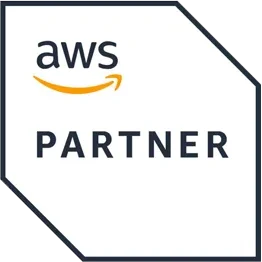 Every software company wants to make sure that their software security protocols are top-notch. There’s no debate surrounding that. But in today’s complex IT world, with companies using more and more software than ever before and cyberattacks running rampant, making sure software is truly secure can get tricky.
Every software company wants to make sure that their software security protocols are top-notch. There’s no debate surrounding that. But in today’s complex IT world, with companies using more and more software than ever before and cyberattacks running rampant, making sure software is truly secure can get tricky.
Computer security software is widely available today and helps companies, and end-users, make sure that they are using the correct software with the right tools to remain safe.
In this piece, we will discuss what software security is, software security types and risks, best practices, and more.
What is software security?
Software security is the concept of implementing mechanisms in the construction of security to help it remain functional (or resistant) to attacks. This means that a piece of software undergoes software security testing before going to market to check its ability to withstand malicious attacks.
The idea behind software security is building software that is secure from the get-go without having to add additional security elements to add additional layers of security (although in many cases this still happens). The next step is teaching users to use the software in the right manner to avoid being prone or open to attacks.
Software security is critical because a malware attack can cause extreme damage to any piece of software while compromising integrity, authentication, and availability. If programmers take this into account in the programming stage and not afterward, damage can be stopped before it begins.
What are the 4 types of IT security?
IT security is the process of protecting all data of a particular entity, both electronic and physical. Often, IT security and cybersecurity are considered close to one another. While this is true, IT security tends to be broader and not only focus on the criminal activity online aimed at causing damage.
There are four main types of IT security that are important to understand when it comes to software security.
- Network security – The security between different devices located on the same network. In this case, both software security and hardware security are important. When securing a network, companies look to make sure that their network won’t be used maliciously.
- End-point security – In this situation, security is focused on the devices used. This means that laptops, phones, computers, tablets, etc. are secure (again, both software and hardware) to avoid unwanted users sneaking in. This often involves various methods of encryption, user controls, and of course, software security.
- Internet security – This is what is commonly known as cybersecurity and deals with the transit and use of information. Cybersecurity attacks happen when information is intercepted and therefore various layers of encryption and authentication are typically used to stop these attacks.
- Cloud security – Cloud security revolves around lowering software security risks within the cloud. Some of the concepts in cloud security overlap with the other forms of security listed here, in having to secure data transfers, and devices on the same network.

Software security vs. application security
The concepts of software security and application security often go together. In fact, many companies today choose to put their emphasis on application security, as it happens after the development process.
That’s the important differentiation between software and application security. Software security vulnerabilities must be taken care of before the software is deployed and sent to the end-users. This requires effort and commitment from programmers and engineers in the development stage. Once the product comes to market, it can be too late (or require substantial changes in future updates which is a situation that most companies prefer to avoid).
Software security best practices
There are a wide variety of software security tools and solutions. Just like any other security practice, you’ll have to build a strategy in order to make sure that your software security solutions remain relevant and working in your benefit.
Keep software up-to-date and patched
Every piece of software has issues at times. There’s no way to avoid that. But, this is one of the most common ways that hackers take action on software users. This is why regular patching and staying up-to-date on software is an important step in ensuring software security.
Software security services and tools can help software users stay on track when it comes to maintenance and inventory of a wide range of software programs.
Least privilege
Least privilege is the concept of giving software users minimal access to programs in order to get their jobs done. In other words, don’t give them access to features, access rights, and controls that they don’t need to use.
By enforcing a least privilege policy, you’ll reduce the risk of attacks by making sure that no one accidentally changes access rights by mistake or has access to information that they don’t need. Don’t forget to reevaluate privileges when employees change positions, finish projects, and of course, leave the company.
Consider automation for software security tasks
Large companies or enterprises can’t keep track of the wide range of tasks that they need to perform on a regular basis manually. This is where automation comes into play (if the hackers are using it, you should be too).
IT departments should automate regular tasks that are important for computer security software such as security configurations, analyzing firewall changes, and more. In order to automate, companies need to invest in the right software security tools and solutions.
Education, education, education
Software security risks won’t just go away at the press of a button. Educating employees is an important part of guaranteeing software security and minimizing software security vulnerabilities.
Schedule one day per quarter to review software security risks, why the information is important, and what employees can do to keep themselves, and the company, safe. It’s also important to teach employees to recognize signs of security attacks, phishing attempts, etc.
 Make a planNothing is 100%, and no matter how hard a company tries, breaches will happen. This is why a software security plan is critical. If something does go wrong, how will you operate? How will you detect an attack and make sure that you’re seeing as little damage as possible as a result?
Make a planNothing is 100%, and no matter how hard a company tries, breaches will happen. This is why a software security plan is critical. If something does go wrong, how will you operate? How will you detect an attack and make sure that you’re seeing as little damage as possible as a result?
Document, monitor, and measure
Write all of your software security policies down so that everyone onboard has access and a thorough understanding of the processes involved (don’t forget to show them to new employees!).
Over time, it’s important to monitor and measure activity. This way you can make sure your users are implementing practices related to computer security software and not abusing privilege or other damaging measures. We also recommend defining key metrics so that you can track your software security risks and security over time.
Why is software security important?
Without a plan in place, software security can severely damage a company. As discussed, software security starts with the developers, making sure that the software is prepared for attacks or anything that tries to bring it down. This process is out of the hands of the end-user but should be an important part in deciding which software pieces to rely on.
After choosing the right software, it’s time to implement the software security best practices discussed. To do this, organizations must turn to software security solutions.
Thales: Your software security partner
Thales provides software distributors and organizations the opportunity to use software risk and worry-free.
Our software monetization tools give you the opportunity to maximize the full potential of your software, without having to worry about backend security.
Thales’ range of software licensing products offers the flexibility to license software according to each company’s needs, giving the ability to scale comfortably and with confidence.

Defend and Protect Intellectual Property Against Threats
Defending Against The Quadruple Threat to Intellectual Property - White PaperTechnology and innovation have never moved faster and most of it involved software in form or another. Learn how Thales can help you protect against the quadruple threat of intellectual property...

Create Recurring Revenue with Software Licensing - White Paper
Higher Revenue, Happier Customers Part 1: Creating a Software Licensing Win-Win with Recurring Revenue: We live in a customer-centric, software and services-focused world. Customers are now driving decision making, and they increasingly expect immediate access and value...

The Sentinel Envelope - White Paper
One of the biggest issues software vendors face in today’s computing environment is how to prevent unauthorized use of their software without creating unnecessary obstacles for customers who wish to legitimately purchase and use it.Copyright infringement of software, also...



